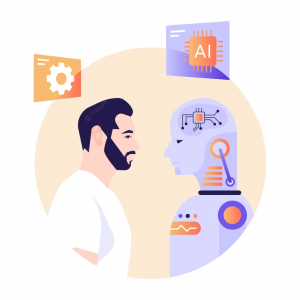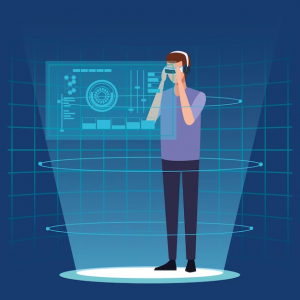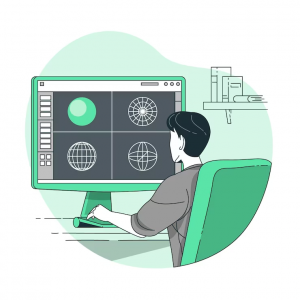The Future of CAD and CAE Technology
Time never waits for anyone or anything, it evolves continuously – including design softwares and the field of CAD (Computer-Aided Design) and CAE (Computer-Aided Engineering) has grown and revolutionised tremendously in recent years, and the technology is showing no signs of slowing down. In this blog, we will explore the future of CAD and CAE technology, and how it will impact the design and engineering industry.

Machine Learning and AI
The integration of Machine Learning (ML) and Artificial Intelligence (AI) with Computer-Aided Design (CAD) and Computer-Aided Engineering (CAE) is transforming the design and engineering industry and this is one of the most exciting developments in the CAD and CAE field is the integration of machine learning and AI. This technology has the potential to revolutionize the way we design and engineer products. AI can be used to analyze large amounts of data and create intelligent models that can predict product behavior with remarkable accuracy. This can lead to faster and more efficient design processes, as well as the creation of more optimized and reliable products.
ML and AI can shape the future of CAD and CAE technology by following ways:
-
Predictive Analysis
-
Design Optimization
-
Automated Design
-
Improved Simulation
-
Quality Control
-
Personalization

Cloud Computing
Cloud computing has already evolved in many industries,including CAD & CAE. Cloud-based CAD and CAE tools allow designers and engineers to access powerful software from anywhere in the world, without the need for expensive hardware or software licences and it also offers several advantages over traditional softwares. This can make the design process more collaborative, efficient, accessible, scalable, and cost-effective.
Cloud computing can shape the future of CAD and CAE in the following ways .
-
Accessibility
-
Scalability
-
Cost-Effectiveness
-
Collaboration
-
Security

Virtual and Augmented Reality
Virtual and augmented reality technologies are emerging as accessible and powerful technologies that are transforming the design and engineering industry, including the field of Computer-Aided Design (CAD) and Computer-Aided Engineering (CAE). These technologies can be used to create immersive simulations of products, allowing designers and engineers to test and refine their designs in a realistic environment. This can lead to more accurate predictions of product behavior and more successful product launches and it can also enhance the design process, improve collaboration, and provide more immersive and engaging experiences for designers and engineers.
VR/AR will shape the future of CAD and CAE in some of the following ways:
-
Enhanced Design Visualization
-
Improved Collaboration
-
Simulation and Prototyping
-
Training and Education
-
Product Marketing

Integration with IoT
The Internet of Things (IoT) is transforming the way we interact with the world around us, and it will have a significant impact on the CAD and CAE fields, and is rapidly transforming the design and engineering industry. The integration of IoT with CAD and CAE tools will allow designers and engineers to create products that are more connected, intelligent, and responsive. This can lead to the creation of innovative products that are more user-friendly and efficient.IoT refers to the interconnection of physical devices, sensors, and software that enable the collection and exchange of data.
Integration with IoT will shape the future of CAD and CAE in some of the following ways:
-
Real-Time Data Collection
-
Predictive Maintenance
-
Digital Twins
-
Improved Automation
-
Better Decision-Making

Generative Design
The use of algorithms to develop optimised designs based on user-specified restrictions is what generative design is all about.This technology, which is quickly altering the fields of Computer-Aided Design (CAD) and Computer-Aided Engineering (CAE), has the potential to result in the development of products that are more efficient, lighter, and stronger than traditional designs. Generative design is already employed in industries like aerospace and automotive, and it has the potential to revolutionise many more.
Generative Design will shape the future of CAD and CAE in some of the following ways:
-
Optimization of Design:
-
Reduced Time-to-Market
-
Improved Collaboration:
-
Enhanced Product Performance:
-
Reduced Costs:

Conclusion
To summarise, the future of CAD and CAE technologies is really exciting and will have a huge impact on the design and engineering industries. Among the technologies that will affect the future of CAD and CAE are machine learning and AI, cloud computing, virtual and augmented reality, IoT integration, and generative design. The opportunities for invention and creativity will be infinite as these technologies grow and become more accessible.


